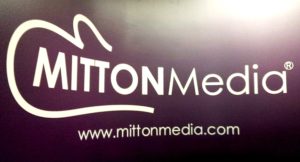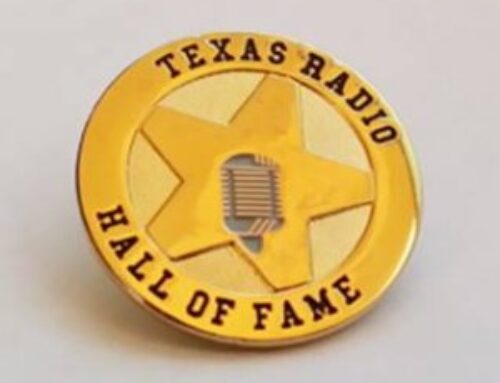This “Throwback Thursday” post answers at least one of the questions we get asked about our success with radio recruitment advertising campaigns for employers across a variety of industries:
- “Why does Mitton Media insist on sixty-second radio recruitment commercials?
Recognized as the “Father of Broadcast Classifieds,” putting job ads on Radio and Television, I thought I’d share one of my articles first published 14 years ago. Little did I realize the impact this little article was about to have on my life, our recruitment advertising agency, the broadcast industry, and recruitment advertising in general.
The Backstory:
- First published in November, 2004, my article below about recruitment advertising success, “Clear Channel’s 30-second Rule Has Radio Advertisers Tuning Out,” was written as my defense of the sixty-second radio commercial and its positive impact on recruitment advertising success for employee recruitment advertising.
- The article was picked up and published nationally, drawing the attention (and ire) of certain people in the Broadcast industry.
- Subsequently Professor David Allan, a marketing professor and former radio executive at Saint Joseph’s University in Philadelphia, was retained by Clear Channel , now iHeart, and the National Association of Broadcasters (NAB) to conduct a scientific study exploring the effectiveness of 30‐second and 60‐ second radio commercials on un‐aided recall.
- Mr. Allan delivered his paper, “Comparative Effectiveness of 30‐ versus 60‐second Radio Commercials on Recall and Rate,” at the Broadcast Education Association’s 2006 conference in Las Vegas.
- The paper stunned the Broadcast community because it scientifically validated everything I’d written in my article, in some cases painting an even bleaker picture of the thirty-second radio commercial.
- The results of Allan’s research were quickly buried.
- Nothing has changed. Everything Allan and I wrote is still true today.
Here is my article as it appeared in the November 12, 2004 print edition of the Houston Business Journal:
Clear Channel’s 30-second rule has radio advertisers tuning out
Author: John Mitton/President/Mitton Media
Special to Houston Business Journal
Broadcast giant Clear Channel Communications (iHeart Media) is trying to redefine the “industry standard” for how long a radio commercial should be.
According to an article in the November 2004 issue of “Radio Business Report,” Clear Channel’s “Less is More” initiative includes a push to reduce the traditional 60-second radio commercial length down to 30 seconds. The rationale is that shorter commercials will reduce “on-air clutter” and are better suited to listeners’ shorter attention spans.
Because radio is an effective tool for recruitment advertising, it is in the best interest of human resources hiring managers and recruiters to examine the situation — to look beyond the hype and see if a :30 radio commercial is really as good as a traditional :60 commercial for delivering effective, cost-efficient
programs.
“Power Point Radio”
Some are calling the :30 radio commercial, “Power Point Radio” due to the fact there’s just enough time to give a few bullet points of information. A :60 radio commercial averages 150 words. Thirty-second radio commercials average 75 words.
Long-time experience shows that the 75-word “bullet point” approach is never as effective as the 150-
word recruitment message, especially in a “sound-only” medium like radio.
Former KODA/Sunny 99.1 Program Director Dave Dillon says, “TV is usually able to get the message across in 30 seconds, but has the advantage of using sight, sound and motion. Radio has to rely solely on sound.”
On-air clutter
No employer wants to risk having its radio recruitment message lost in a sea of on-air clutter.
In 1996, the Federal Communications Commission enacted the Telecommunications Act. This gave broadcasters the freedom to buy more radio stations per market. Rapid acquisitions and expansion soon followed.
With expansion came heavy debt. How was the debt to be paid? Run more commercials. It was not uncommon to see commercial spot loads on many stations jump from 10 units per hour to 21 units per hour. Instant on-air clutter!
Not all broadcasters opted to increase their commercial loads. Companies like Entercom and Cox Broadcasting have, for several years, adhered to strict guidelines for limiting the number of commercial “units” their stations can run per hour.
In most cases, these stations run 14 units per hour during the morning drive time and 12 units an hour for the rest of the day. While most of the units are :60s, it wouldn’t translate differently if they were all :30s or :10s. It is a “unit” count, not a “minute” count.
Why pay more for less?
According to an article in the October 4, 2004 Wall Street Journal, Clear Channel initially tried to charge more for two :30s than they were getting for one :60. Then the price dropped to 80 percent to 85 percent of a :60.
“Giving you less, charging you more” is how it was described by many in the advertising community.
On most radio stations, :30 commercials sell at either the same price as a :60 (unit pricing) or 80 percent to 85 percent of a :60. In fact, many radio stations use the 80 percent to 85 percent as a way to discourage advertisers from buying the shorter commercial. Why pay that much for only half the time?
Pay the extra 15 percent and get the full :60!
Larry Kelley, executive vice president/media director for Houston-based advertising agency Fogarty Klein Monroe, points out that the 80 percent to 85 percent formula doesn’t exist in any other medium.
Says Kelley, “On a national basis, when advertisers want to air a :15 TV commercial instead of a :30 commercial, major TV properties only charge about 50 percent for the :15 spot.”
“Cheaper” does not mean ” More Effective”
The “Less Is More” initiative says the cheaper rate for a :30 commercial allows clients to buy more commercials, more frequency and, thus, more effectiveness. But does it?
FKM’s Larry Kelley states there is substantial “copy recall” research available which indicates that a :30 radio commercial is only 50 percent to 60 percent as effective as a :60 radio commercial.
Assume there is a $10,000 recruitment budget. Sixty-second radio commercials are priced at $250 each. A company can afford 40 :60 commercials. Priced at 80 percent, the 40 :30 commercials will cost $8,000.
However, because research shows :30s are only 50 percent to 60 percent as effective, a company will need to buy at least 56 :30 commercials at a cost of $11,200 to be as effective as with the 40 :60 commercials.
Best interest for whom?
According to the radio industry’s own recently released Radio Ad Lab Survey,
“There is no one-size-fits all ad for radio (at least not one that’s effective) …”
Every situation is different. Some companies may only need :30s. Others, especially those with a lesser degree of public awareness or a longer story to tell, will continue to need the full :60.
Every radio station in the country will sell :10/:15s, :30s and :60s. The problem occurs when a radio station or group of stations stops being “customer focused” and instead tries to force customers to do business the way the radio station wants to do business, whether it’s in the customers’ best interest or not.
In the end, on-air clutter is reduced by shorter commercial breaks, not shorter commercials. On the cost side, recruiters and hiring managers need to decide if they are comfortable paying more for less. They will also need to realize that “cheap” does not equal “effective,” and “effective” does not have to equal “expensive.”
Radio is a great tool in a recruiter’s toolbox. It works, if implemented the right way.
Author:
John Mitton is president of Mitton Media, a Recruitment Advertising Agency based in the Houston, TX area.
© 2004 American City Business Journals Inc.
–END–
(Editor’s Note: In case you are interested, on June 15, 2016, MediaLife Magazine published, “The Year That Changed Radio Forever: 1996,” which provides a “Where Are They Now?” perspective to the whole unfortunate situation.)
Mitton Media®

The staff of recruitment advertising professionals at Mitton Media design, produce, and execute blended recruitment advertising programs that GRAB ATTENTION and GENERATE IMMEDIATE RESPONSE. “Hard-to-Fill,” “General Hire,” or “Mass Hiring.” “Professional,” “Skilled,” “Hourly,” or “Seasonal.” Mitton Media helps employers gain the competitive edge they need to be successful in today’s competitive workplace.
Contact Shana Reinhart for more information about Mitton Media’s services, capabilities, and JOBSPIPELINE®.



